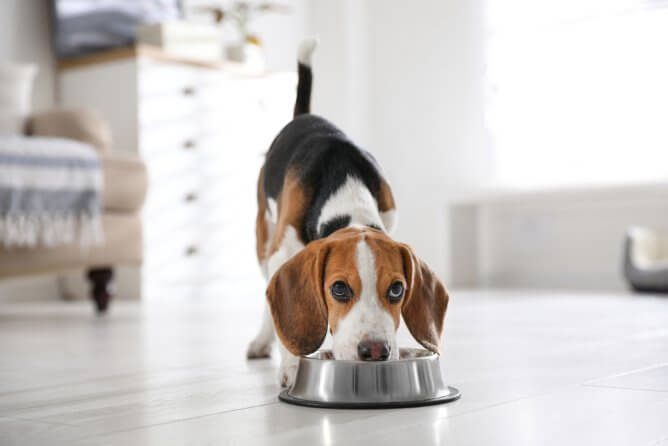Diet Rotation for Dogs
The following items represent some of The Dog Food Advisor’s most frequently asked questions about diet rotation for dogs.

Diet Rotation Helps Lower Risk
Diet rotation can be a safer way to feed your dog.
That’s because…
Any dog food can contain hidden flaws and defects.
Too much of one nutrient. Too little of another. Or the food may contain hidden toxins or industrial contaminants.
Imperfections not yet discovered by the manufacturer. Or the FDA.
And you’d never even know it.
What’s worse…
The effect of consuming any defective food tends to be magnified… whenever you feed the same food… continuously.
Day-after-day. For a lifetime.
Frequently Asked Questions
What is diet rotation?
Unlike a conventional feeding plan where the same food is served at each meal, diet rotation involves intentionally switching your dog’s food on a planned schedule.
Why should I consider diet rotation for my dog?
Since there’s no such thing as a perfect dog food, it’s reasonable to assume every product you buy is deficient (or excessive) in some crucial way.
By periodically switching dog foods, the unhealthy consequences of serving the same imperfect products can be minimized.
Isn’t changing my dog’s diet dangerous?
Diet rotation is not for every dog. That’s because some animals can’t tolerate diet changes as easily as others. While others are on special “prescription” diets that should not be switched without the advice of your dog’s vet.
In any case…
We’ve never been able to find a single scientific study proving diet rotation to be unhealthy or detrimental to a dog.
Does diet rotation mean mixing 2 dog foods and serving them at the same meal?
No. The benefits of diet rotation are optimized only when cycling between different products on a periodic basis.
How often should dog foods be switched?
There’s no rotation feeding plan that works better than the others. It all depends on your own personal feeding preferences.
Some dog parents switch foods monthly. Others more frequently. Most prefer to empty one bag of kibble before beginning the next.
Is there a downside to diet rotation?
There are 2 potential problems with diet rotation…
- Digestive upset
- Maintaining product freshness
Since some dogs have sensitive stomachs, the potential for GI upset can be an issue for certain pets.
And because alternating between two or more kibbles can make each bag take longer to use up, it can be difficult to maintain the freshness of each product.
How can I switch to a new food without getting my dog sick?
In the following short video…
Dr. Gary Richter shares a simple feeding tip that can help lower your dog’s risk of getting sick when you switch to a new food.
It’s best to switch your dog to new food gradually.
Start by mixing 20% “new” with 80% “old” food. Then, slowly increase that amount to a full 100%… over the next 8 to 9 days.
| Schedule | Old Food | New Food |
|---|---|---|
| Days 1 and 2 | 80% | 20% |
| Days 3 and 4 | 60% | 40% |
| Days 5 and 6 | 40% | 60% |
| Days 7 and 8 | 20% | 80% |
| Day 9 | 0% | 100% |
Be patient and don’t rush the process. Take your time to minimize the chance of GI upset.
Recommended Brands
The following top picks were selected from our best dog food pages. None are known as repeat offenders when it comes to recalls… or other matters of product safety.




